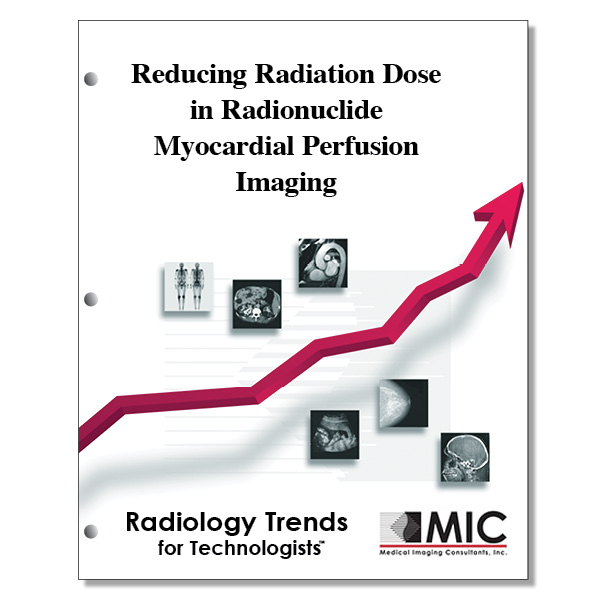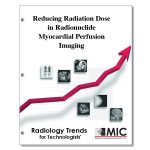

Reducing Radiation Dose in Radionuclide Myocardial Perfusion Imaging
A practical approach to performing low-radiation-dose myocardial perfusion imaging using traditional and novel technologies.
Course ID: Q00456 Category: Radiology Trends for Technologists Modalities: Nuclear Cardiology, Nuclear Medicine, PET3.0 |
Satisfaction Guarantee |
$34.00
- Targeted CE
- Outline
- Objectives
Targeted CE per ARRT’s Discipline, Category, and Subcategory classification:
Nuclear Medicine Technology: 3.00
Safety: 0.50
Radiation Physics, Radiobiology, and Regulations: 0.50
Procedures: 2.50
Cardiac Procedures: 2.50
Outline
- Introduction
- The Vital Importance of Radionuclide MPI to Manage CAD
- The Need to Reduce Radiation Dose from MPI
- Radiation Dose Reduction Before MPI: Appropriate Use
- Frequency of Appropriate MPI per AUC
- Methods to Increase the Appropriate Use of MPI
- Radiation Dose Reduction During the Test: Optimize MPI
- Selection of Radiotracers
- Stress-First or Stress-Only Imaging Protocols for Reduced-Dose MPI
- Novel Reconstruction Software, Scanners, and Collimators for MPI
- Dose Reduction with PET
- Radiation Dose Reduction After the Test
- Conclusion
Objectives
Upon completion of this course, students will:
- identify a group at risk from the overutilization of MPI
- discuss the goals of appropriate use criteria
- identify the greatest strength of MPI
- compare cost effectiveness of MPI to other modalities
- understand how cancer risk is calculated
- identify risk of harm from low level radiation exposure
- compare radiation exposure increase from MPI to other sources
- compare radiation exposure from 99mTc MPI to other sources
- understand other risk from reducing radiation exposure
- understand where in the MPI process radiation reduction can take place
- understand the ranges of AUC criteria
- understand how to reduce radiation exposure after the exam is completed
- describe populations typically considered inappropriate for MPI testing
- identify the goal of the Choosing Wisely campaign
- understand who is involved with successful AUC use
- identify the goal of ACC’s FOCUS program
- compare the success of AUC-DST for appropriate and inappropriate tests
- understand future requirements of AUC and medical imaging
- describe the best communication for assuring AUC in MPI
- understand the long term goal of AUC and radiation reduction
- identify pathways to less than 9mSv MPI studies
- understand effective radiation dose
- compare the differences in radiotracers for SPECT MPI
- compare the differences between SPECT and PET radiotracer exposure
- identify the utility of a weight or BMI-based dose scale
- understand the value of a stress first/stress only protocol
- identify the best patient population for a stress first MPI protocol
- describe methods of artifact identification in MPI
- understand the prognostic value of stress only MPI
- describe the various benefits of iterative reconstruction methods
- understand the benefit of new solid state MPI scanners
- understand the benefit of dedicated cardiac scanners
- understand how PET image quality is achieved
- describe the limitations of stress only PET MPI
- identify the steps to reducing layered testing in MPI
